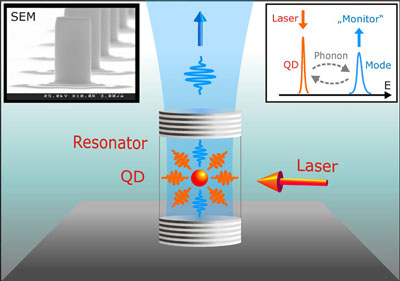Quantum Emission: Unveiling the Secrets of Light at the Nanoscale
What is Quantum Emission?
Quantum emission is a fundamental process in which a quantum system, such as an atom, molecule, or quantum dot, releases energy in the form of photons. This phenomenon is governed by the laws of quantum mechanics and plays a crucial role in various applications, including quantum optics, quantum information processing, and nanoscale imaging.

Mechanisms of Quantum Emission
Quantum emission can occur through several mechanisms, depending on the nature of the quantum system and the external stimuli. The two primary mechanisms are:
Spontaneous Emission
Spontaneous emission is the process by which a quantum system in an excited state spontaneously decays to a lower energy state, emitting a photon in the process. This process is driven by the interaction between the quantum system and the surrounding electromagnetic field. The rate of spontaneous emission depends on the strength of this interaction and the density of available photon states.
Stimulated Emission
Stimulated emission occurs when a photon interacts with a quantum system that is already in an excited state, causing it to emit an additional photon with the same energy, phase, and direction as the incident photon. This process is the basis for the operation of lasers and other coherent light sources. Stimulated emission requires a population inversion, where the majority of the quantum systems are in an excited state.
Single-Photon Emission
One of the most intriguing aspects of quantum emission is the ability to generate single photons on demand. Single-photon sources are crucial for applications in quantum cryptography, quantum computing, and quantum metrology. Some of the most promising single-photon emitters include:
Quantum Dots
Quantum dots are nanoscale semiconductor structures that confine electrons and holes in all three spatial dimensions. Due to this confinement, quantum dots exhibit discrete energy levels and can emit single photons when an electron-hole pair recombines. The emission wavelength can be tuned by controlling the size and composition of the quantum dot.
Color Centers
Color centers are atomic-scale defects in wide-bandgap materials, such as diamond and silicon carbide. These defects can trap electrons or holes, forming a localized quantum system that can emit single photons. The most well-known color center is the nitrogen-vacancy (NV) center in diamond, which has been extensively studied for its potential in quantum sensing and quantum information processing.
Molecules and Atoms
Single molecules and atoms can also serve as single-photon emitters. For example, single dye molecules embedded in a solid matrix or trapped in a optical cavity can emit single photons. Similarly, single trapped ions or neutral atoms can be used as single-photon sources, leveraging their well-defined electronic transitions.
Applications of Quantum Emission
Quantum emission has a wide range of applications across various fields, including:
Quantum Cryptography
Single-photon sources are essential for quantum key distribution (QKD), a secure communication protocol that relies on the principles of quantum mechanics. In QKD, single photons are used to encode and transmit cryptographic keys, ensuring the security of the communication channel against eavesdropping.
Quantum Computing
Quantum emission is a key ingredient in the realization of quantum computers. Single photons can serve as qubits, the fundamental building blocks of quantum information processing. Photonic quantum computing architectures rely on the generation, manipulation, and detection of single photons to perform quantum computations.
Quantum Metrology
Quantum emission can be harnessed for ultra-precise measurements and sensing applications in quantum metrology. Single-photon sources can be used in quantum interferometry, enabling the detection of extremely small phase shifts or displacements. Additionally, color centers like NV centers in diamond can be used as nanoscale sensors for magnetic fields, electric fields, and temperature.
Challenges and Future Perspectives
Despite the remarkable progress in understanding and controlling quantum emission, several challenges remain. One of the main challenges is the development of efficient, stable, and scalable single-photon sources that can operate at room temperature. Currently, most single-photon emitters require cryogenic temperatures to suppress non-radiative decay channels and maintain their quantum properties.
Future research in quantum emission will focus on the discovery and engineering of novel quantum emitters with improved optical and spin properties. The integration of single-photon sources with photonic circuits and cavities will enable the realization of complex quantum photonic devices. Additionally, the exploration of quantum emission in two-dimensional materials, such as transition metal dichalcogenides, will open up new opportunities for quantum optoelectronics and quantum sensing.
Further Reading
Journal of Semiconductors, Review on the quantum emitters in two-dimensional materials
Nanophotonics, Advances in quantum light emission from 2D materials
npj Quantum Information, Topological single-photon emission from quantum emitter chains
